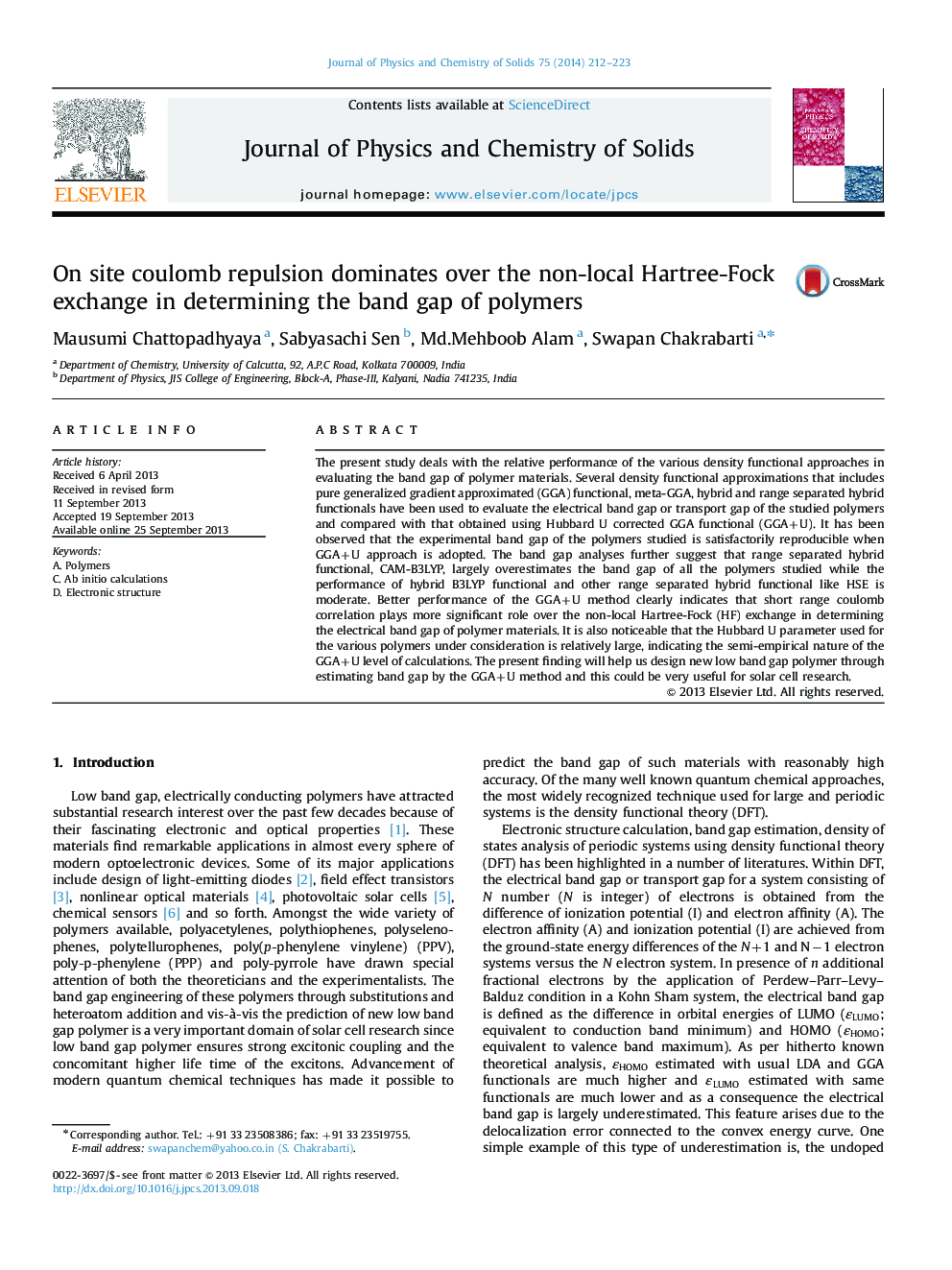| Article ID | Journal | Published Year | Pages | File Type |
|---|---|---|---|---|
| 1516173 | Journal of Physics and Chemistry of Solids | 2014 | 12 Pages |
•We investigate the relative performance of the various density functional approaches in evaluating the band gap of polymers.•Only GGA+U functional satisfactorily reproduces the experimental band gap of each of the polymer studied.•CAM-B3LYP overestimates the band gap of the studied polymers while the performance of B3LYP and HSE functionals are moderate.•Our study indicates short range correlation dominates over the non-local HF exchange in determining the band gap of polymers.
The present study deals with the relative performance of the various density functional approaches in evaluating the band gap of polymer materials. Several density functional approximations that includes pure generalized gradient approximated (GGA) functional, meta-GGA, hybrid and range separated hybrid functionals have been used to evaluate the electrical band gap or transport gap of the studied polymers and compared with that obtained using Hubbard U corrected GGA functional (GGA+U). It has been observed that the experimental band gap of the polymers studied is satisfactorily reproducible when GGA+U approach is adopted. The band gap analyses further suggest that range separated hybrid functional, CAM-B3LYP, largely overestimates the band gap of all the polymers studied while the performance of hybrid B3LYP functional and other range separated hybrid functional like HSE is moderate. Better performance of the GGA+U method clearly indicates that short range coulomb correlation plays more significant role over the non-local Hartree-Fock (HF) exchange in determining the electrical band gap of polymer materials. It is also noticeable that the Hubbard U parameter used for the various polymers under consideration is relatively large, indicating the semi-empirical nature of the GGA+U level of calculations. The present finding will help us design new low band gap polymer through estimating band gap by the GGA+U method and this could be very useful for solar cell research.
